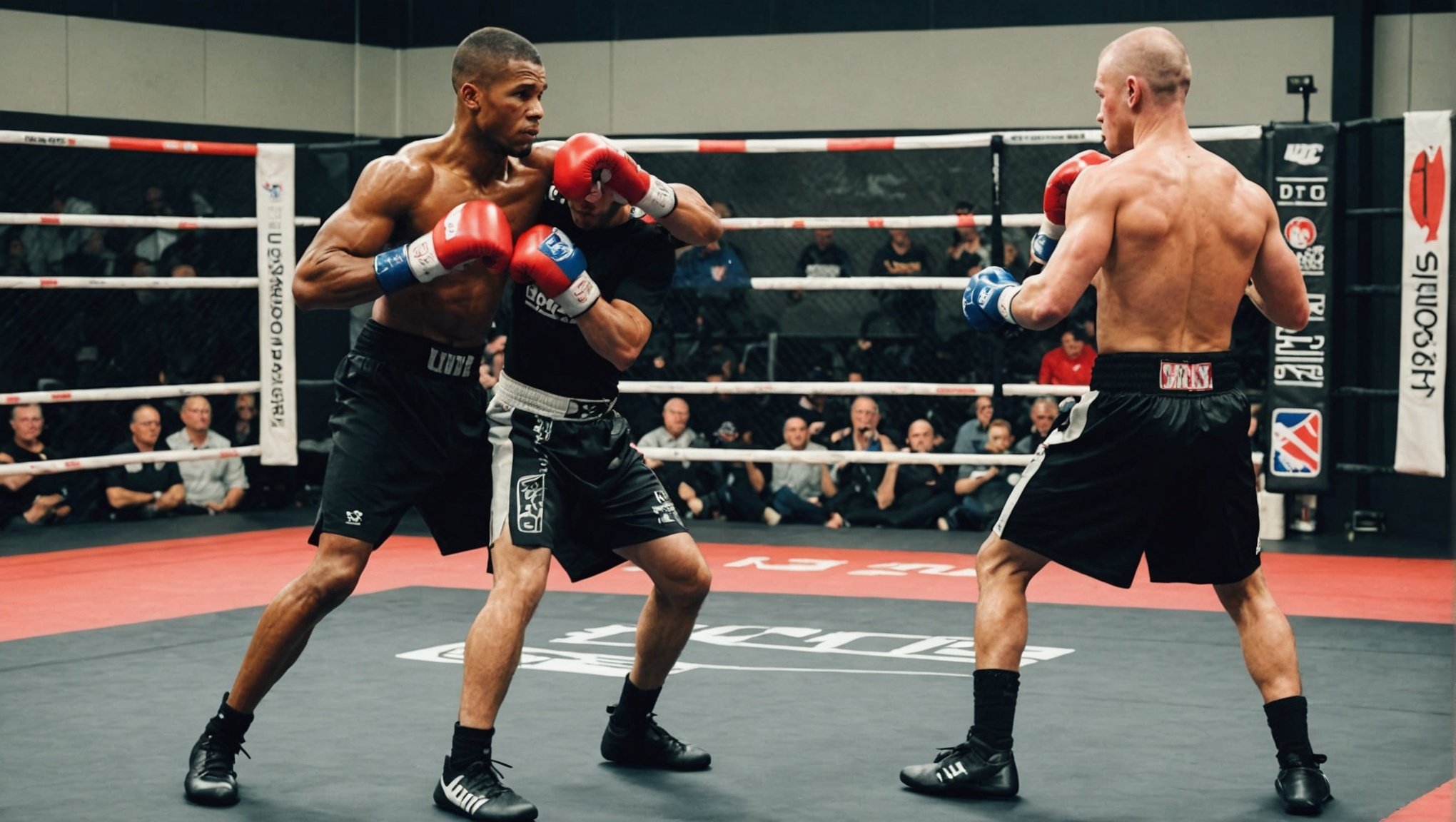Effective match strategy can be the difference between victory and defeat in the kickboxing ring. UK kickboxers face unique challenges that require sharp tactical thinking and adaptability. Understanding how to analyze opponents, adjust strategies on the fly, and predict their movements enhances performance. This guide provides actionable tips to sharpen your tactical approach, empowering you to make decisive moves during matches. Uncover techniques that will elevate your skills and improve your chances of success against any opponent. Get ready to rethink your strategy and dominate in the ring!
Understanding Tactical Thinking in Kickboxing
Tactical thinking in kickboxing refers to the strategic planning and decision-making skills that fighters employ during a match. Unlike mere physical prowess, tactical thinking involves analysing opponents, anticipating their moves, and making quick adjustments. This cognitive aspect is crucial as it directly influences a fighter's ability to adapt and overcome challenges in the ring.
Have you seen this : Top Strategies for UK Combat Athletes to Overcome Jet Lag When Competing Abroad
Importance of Tactical Thinking in Kickboxing Performance
A strong kickboxing strategy is essential for success. Fighters with high Fight IQ—the ability to read fights and make strategic decisions—often outperform those relying solely on physical strength. Tactical thinking enables fighters to exploit opponents' weaknesses, conserve energy, and deliver effective strikes. This strategic edge can be the difference between winning and losing.
How Tactical Thinking Differentiates Successful Fighters
Successful fighters are not just physically skilled; they possess a keen sense of tactical thinking. This ability allows them to stay a step ahead, predicting opponents' tactics and countering effectively. Fighters with superior tactical thinking can control the pace of the fight, maintain composure under pressure, and execute complex strategies. Thus, developing a robust kickboxing strategy and honing one's Fight IQ are pivotal for achieving success in the sport.
Also read : Top Hydration Strategies for UK MMA Fighters: Essential Tips for Fight Day Success
Key Elements of Match Strategy
Developing a robust match strategy is crucial for any kickboxer aiming for victory. It involves meticulous fight planning and understanding various strategy components. At its core, a sound match strategy begins with a detailed analysis of the opponent's fighting style. This analysis enables fighters to tailor their approach, exploiting weaknesses and countering strengths effectively.
Fight planning is the backbone of match strategy. It includes conditioning, technique refinement, and mental preparation. Fighters meticulously plan their training regimes to align with their match strategy, ensuring they are physically and mentally prepared for any scenario. This preparation includes practising specific moves to counter anticipated tactics from opponents.
A well-rounded strategy incorporates several components:
- Defensive tactics: Protecting oneself while identifying opportunities to strike.
- Offensive strategies: Timing and precision in delivering strikes.
- Energy management: Efficiently conserving stamina to maintain performance throughout the match.
By integrating these elements into their match strategy, fighters enhance their adaptability and increase their chances of success. This strategic foresight is essential for outsmarting opponents and achieving victory in the ring.
Training Techniques to Enhance Tactical Skills
Enhancing tactical skills in kickboxing requires a focused approach to training techniques. One of the most effective methods is incorporating tactical drills into regular practice. These drills are designed to improve situational awareness and decision-making under pressure. For instance, fighters can engage in scenario-based drills where they react to specific opponent behaviours, honing their ability to anticipate and counteract moves effectively.
Footwork exercises are another crucial component for skill development. Proper footwork enhances a fighter's ability to maintain optimal positioning and balance, which is essential for both offensive and defensive manoeuvres. Exercises such as ladder drills or shadowboxing with a focus on movement can significantly improve a fighter's agility and precision in the ring.
Sparring sessions play a pivotal role in applying tactical strategies in real-time. During these sessions, fighters should concentrate on executing specific tactics they've practised, such as controlling the fight's pace or exploiting an opponent's weaknesses. This practical application reinforces theoretical knowledge and builds confidence, ultimately leading to improved performance in actual matches. By integrating these training techniques, fighters can elevate their tactical prowess and gain a competitive edge.
Mental Tactics for Kickboxers
In kickboxing, mastering mental tactics is as crucial as physical training. Fight psychology plays a significant role in determining a fighter's performance. Mental preparation involves cultivating a mindset that can withstand the pressures of combat sports.
The Role of Mental Preparation in Combat Sports
Mental preparation is essential for kickboxers to perform at their best. It involves developing resilience and confidence, enabling fighters to handle the stress of competition. A strong mental foundation helps fighters remain focused and composed, even in challenging situations.
Visualization Techniques for Enhancing Performance
Visualization is a powerful tool in a kickboxer's arsenal. By mentally rehearsing fights, fighters can enhance their performance. This process involves imagining successful techniques and strategies, which can improve confidence and readiness. Visualization helps fighters anticipate challenges and mentally prepare for various scenarios in the ring.
Strategies for Maintaining Focus and Composure During Fights
Maintaining focus and composure is vital during a match. Techniques such as controlled breathing and mindfulness can help fighters stay centred. By focusing on the present moment, fighters can block out distractions and maintain clarity in their strategy. Developing these mental tactics ensures a fighter remains calm and effective, regardless of the fight's intensity.
Insights from Experienced Fighters and Coaches
Gaining insights from experienced fighters and coaches can significantly enhance a kickboxer's tactical skills. Fighter insights often reveal the nuances of strategic planning that can only be learned through experience. For instance, seasoned fighters emphasize the importance of adaptability, advising that flexibility in strategy is crucial when faced with unexpected opponent tactics.
Coaches provide invaluable coaching tips for developing effective match tactics. They stress the need for fighters to cultivate a keen sense of observation, encouraging them to study opponents meticulously. This involves analysing past fights to identify patterns and weaknesses that can be exploited. Coaches also advocate for a balanced approach, combining offensive and defensive strategies to maintain control in the ring.
Expert advice from both fighters and coaches often highlights real-life examples of successful strategies in high-level competitions. For example, a fighter might recount a match where a well-timed counterattack turned the tide in their favour. Such experiences underscore the importance of timing and precision, illustrating how strategic thinking can lead to victory. By incorporating these insights, fighters can refine their tactics and elevate their performance in the ring.
Visual Aids and Resources for Tactical Training
Utilising visual aids in kickboxing can significantly enhance a fighter's understanding of complex strategies. These tools provide a clearer perspective on executing techniques and adapting tactics. Instructional videos are particularly beneficial, as they demonstrate movements and strategies in real-time, allowing fighters to observe and replicate them accurately.
Training resources available online offer a wealth of information for kickboxers seeking to improve their tactical skills. Platforms like YouTube and specialised martial arts websites host a range of content from beginner tutorials to advanced strategy sessions. These resources often include expert insights and practical demonstrations, making them invaluable for fighters at any level.
Diagrams and video tutorials are effective for illustrating tactical drills and techniques. They break down movements into manageable steps, helping fighters grasp nuances that might be missed in verbal explanations alone. By studying these visual aids, fighters can better understand positioning, timing, and execution of various strategies.
Incorporating these training resources into regular practice can lead to improved performance. By consistently engaging with visual aids, fighters can refine their techniques, enhance their tactical thinking, and ultimately gain a competitive edge in the ring.






